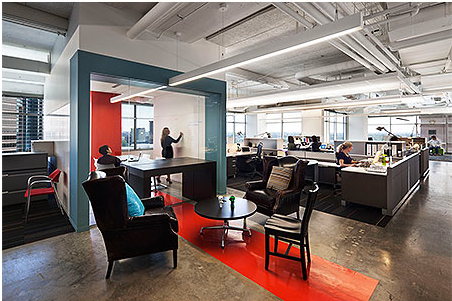New Gensler workplace survey
Gensler Releases 2013 U.S. Workplace Survey, Finds Only 1 in 4 U.S. Workers Currently Work in Optimal Workplace Environments – this newest study of workplace design and worker productivity by international architecture, design, and consulting firm Gensler points to a need for balance between spaces for collaborative and individual work. In itself this isn’t surprising, but some of the data supporting that conclusion is worth noting.
Analysis of those in optimal environments shows that the ability to effectively balance focus and collaboration via strategic workplace design is the key to innovation and success. …
Workplace effectiveness has declined since 2008, as measured by comparative data between Gensler’s 2013 and 2008 U.S. Workplace Surveys. The inability to focus for many is the key driver of workplace ineffectiveness. Results show that a lack of effective focus space drags down the effectiveness of all other work modes: collaboration, learning and socializing, as well as the effectiveness of the workplace as a whole. … Despite many workplaces designed expressly to support collaboration, time spent collaborating has decreased (20 percent), while time spent focusing has increased (13 percent). …
Employers who provide a spectrum of choices for when and where to work are seen as more innovative by their employees, have employees who are more satisfied with their jobs (12 percent) and report higher effectiveness scores across all four work modes. … Interestingly, increasing choice doesn’t mean working from home. Respondents with choice still spend the vast majority (70 percent) of their time in office settings. These respondents cite coming to work for access to people and resources.
Here’s another post from Gensler, Rebalancing the Workplace-A Preview of the 2013 U.S. Workplace Survey and one from The Registry with commentary.
Thanks, Jim, for sending me The Registry article.

